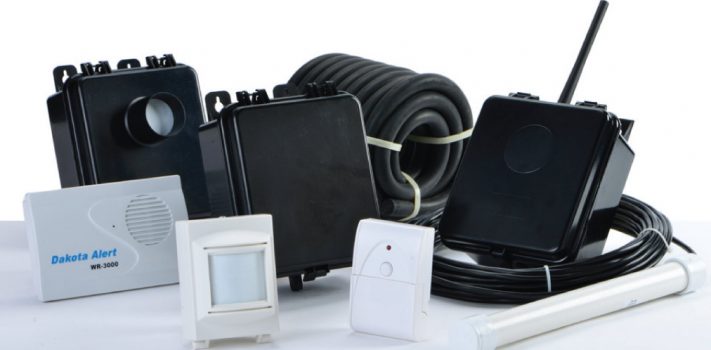Email a copy of 'Optimizing MURS Dakota Alert Sensors - Part 2, by Tunnel Rabbit' to a friend
6 Comments
- Ad Barter and Sell at Simcour Trading PostA new site for individuals to barter and sell items of interest to other like-minded individuals
- Ad L3 UNFILMED WHITE PHOSPHOR COMMERCIAL GRADE NIGHT VISION PACKAGEHuge Savings $400 off normal cost!


We’re very satisfied with our MURS Dakota Alert system, we’ve had four sensors out for several years, and have a few suggestions.
1) Tired of false alarms when a deer would walk by on our driveway, I put two sensors on the drive, zone 1 and zone 2 about 100 yards apart. If only one reports, it’s probably a deer, if both report it’s definitely someone in the drive.
2) Install a short 1×4 on the back side of a tree, and attach the sensor to the board. It won’t be seen until a person is already past the unit and detected.
3) The older units had a male voice, while the newer ones have a female voice. I suggested to Dakota Alert that they make voices optional to increase the flexibility of the system. Apparently they haven’t. I put our older units with the male voice in storage, replacing them with the female voice. In bad times we will have the ability to have eight units out – zone 1 female east, zone 1 male west.
With the current placement of our sensors, if someone can get to our front door without us knowing it, they came by parachute.
OzarksTom,
It’s good to get testimony that confirms. Yes, I prefer to use them is pairs along a road way. It would seem like a waste, yet is proves to be useful. Many users find them invaluable as they have actually used them over time and learned. They can be made to be more reliable than others have concluded. Like anything done well, it requires practice.
The use of external antenna seems like an extra thing to avoid, yet in snow country, this kind of antenna is less effected by snow that builds up on the top of the sensor.
External antennas also allows one to further camouflage and protect the sensor from the weather. And while it may seem as if I can go to extremes (and yes, that is true), one learns how to maximize a valuable tool. We have undulating terrain and heavily forested forests, and even though ‘as the crow flies’ the distance might only be 1/4 mile, the small hills pose a problem for the standard antenna and Baofeng antenna on the receive side. Many have these sensors in storage, yet until they deploy them, they will not know how to used them, and solve the various ‘problems’ that can frustrate and eventually discourage the use of an other wise invaluable tool.
I’ve spoken with several combat experienced and retired NCOs about these, and find that, if they had experience with them, they would find them necessary. I believe this would be the reaction of anyone who has not used them. It is like anything else, we don’t know, what we don’t know. The best tools and techniques are those that are unrecognized or underappreciated. Given that I have gone to extremes with these, and have my own army out there 24/7 that sees in the dark, I confidently believe these things are a serious force multiplier that should not be ignored. And few, including many of the best combat soldiers out there, will not know about these things, and how they are used.
No kidding! My sensors are right at this moment be alerting on a grizzly at the chicken coup ….gotta go!
Re: Grizzly Alert, false alarm.
Found to be a herd of , guess what, tunnel rabbits. Yes, I have friends! Major disappointment. Looks like that sensor needs to be closer to the target, or put on a trip wire. I could also put a flash- bang on it, yet that might be too much for the chicken coop operator, and could result in lots of broken eggs….
Excellent article and great advice from Ozark Tom
Does anybody know if the much cheaper 4000 series motion sensors can be used with other receivers or just the factory ones?
If you already have baofeng radios programmed to MURS do you need both the akota Alert MURS Alert Transmitter (MAT) and M538-BS Wireless MURS Base Station $179.99?
Or can you get away with just the Dakota Alert MURS Alert Transmitter (MAT) $119.99?
Thank you!